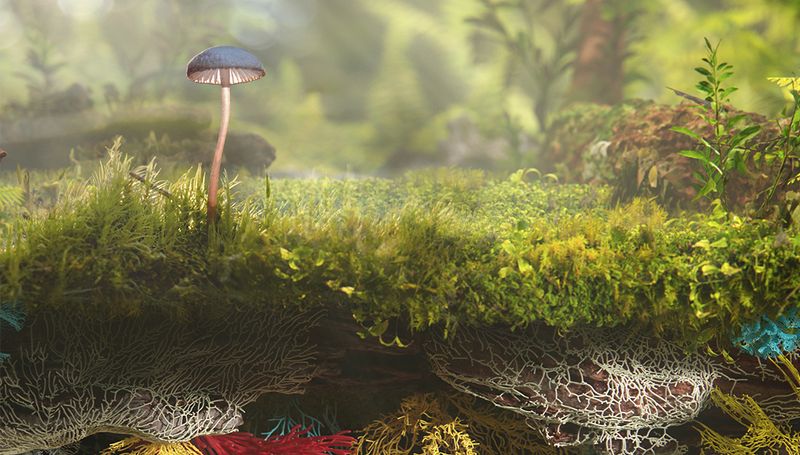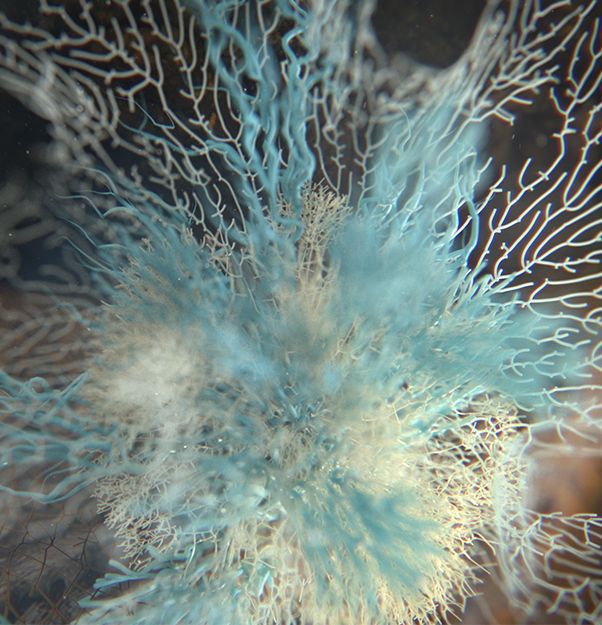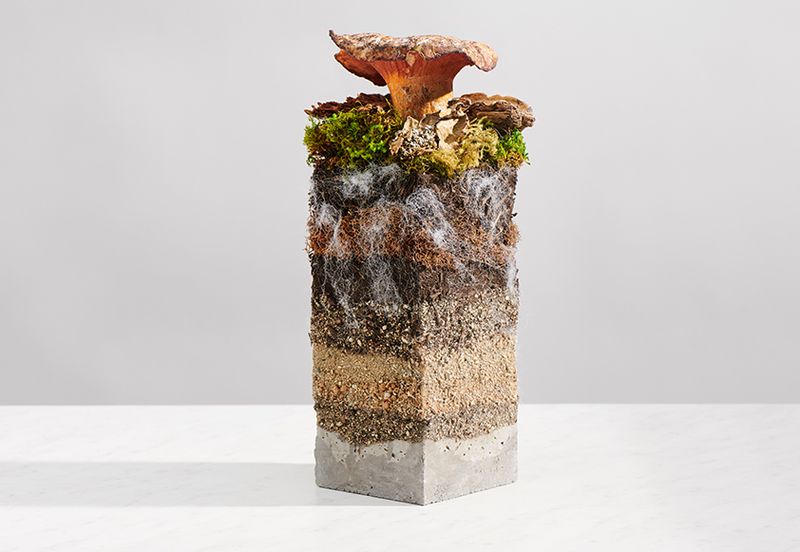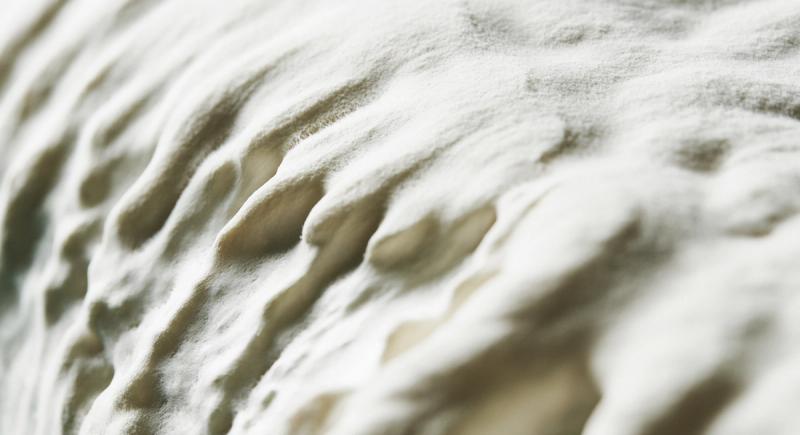What is Mycelium: Benefits & Uses


Mycelium: The Basics
Mycelium is part of the fungi kingdom and is the network of threads, called hyphae, from which mushrooms grow. Not all mycelia fruit mushrooms, depending on the environmental conditions, but all mushrooms come from mycelia.
Mycelia are most prevalent in fields, forests, and heavily wooded areas. Its hyphae, a network of web-like structures that form mycelium, secrete enzymes to break down food sources to be used by the organism. There are some mycelia that span over thousands of acres and some that are microscopic.
Mushrooms are the fruit of mycelia, and the type of mushrooms that form are completely different from one mycelium to the next. Their presence is determined by several environmental factors, including the availability of a significant food source for mycelia, the humidity, and temperature.
Through hyphae, mycelium breaks down and absorbs surrounding organic matter into nutrients that can be absorbed and used as nourishment. Mycelia make up a critical part of their ecosystems by aiding in the decomposition and regeneration process. You might come across mycelium formation in the making while on a wooded walk. They also intertwine with plant and tree roots to form a complex, symbiotic ecosystem.
Spores are released from mushrooms, and after dispersing by air or water, germinate and create mycelia. Some spores float on wind currents, while others are buoyant and float on streams and lake currents.
When the spores finally settle, they begin to grow by sending out hyphae to break down compost or plant matter around them. Mycelia grow quickly in the right conditions of humidity and temperatures between 50 and 90 degrees celsius, as long as there is a consistent food source for it to feast upon. While these spores start at imperceptible sizes, they can quickly be spotted growing within about 24 hours.
Mycelia vary in their overall thickness, depending on the genus of the spores. Some mycelium can be just a few millimeters thick, while others can be closer to two centimeters or more.
There are more than 14,000 species of mycelia and mushrooms in the world, with more that have yet to be discovered by scientists. Certain types of mycelia are eco-specific and only exist in certain regions of the world. As fungi are neither animal nor plant, these versatile and interesting organisms are a critical part of ecosystems and the natural processes of decay and renewal.


Facts About Mycelium
Mycelium and other fungi predate humans by millions of years. Scientists have discovered 90-million-year-old specimens in amber, and some fossilized fungi have been unearthed that date back to 420 million years.
Mycelia are so tiny, that one cubic inch of soil can contain enough to stretch 8 miles.
Despite its small size, a network of hyphae that form mycelium can still cover a lot of acreage. In fact, there is a network of mycelium known as The Humongous Fungus, which covers nearly four square miles in Oregon’s Malheur National Forest.




Most Common Uses of Mycelium
We are just beginning to tap the potential of mycelium in a variety of applications beyond their natural environment. Researchers and engineers have begun testing ways to use this versatile material and draw inspiration from its unique qualities to build and create better medicines, materials, biofuels, and many other products that we use in our everyday life.
Mycelium can be used to make building materials fire-resistant, stronger, and lighter. It can be used in the fashion industry to mimic the look, texture, and utility of leather. In some cases, it can even be used as a bonding agent for building materials, such as brick.
Mycelium is an eco-friendly, sustainable, and renewable resource. Because of its inherent properties, it can be recycled and regrown time and time again. With many industries in search of more sustainable solutions, mycelium provides a world of endless possibilities.
Mycelium Leather
On a mission to harness the promise of advanced materials science, a team of visionary scientists and engineers at Bolt Threads have developed a state-of-the-art process to grow and transform mycelium into a high-quality alternative for animal and synthetic-based leather named Mylo™ material.
To make Mylo™, the process begins by recreating mycelium’s natural environment in a controlled indoor environment using vertical farming.
Spores of mycelia cells are fed sawdust and other organic material and then spread out on mats, where it grows to form a cascading, foam-like substance. Growing conditions like temperature and humidity are controlled to hone Mylo’s desirable qualities.
Once the mycelium is harvested, the leftover byproducts get composted and the sheet gets processed and dyed to become Mylo™ material. Mycelium can be tanned in the same way as animal or synthetic leather. It can also be dyed as well as embossed to take on different textures. The final tanning and dyeing processes make a leather-like fabric that can be used to make beautiful handbags, footwear, phone cases, and other products.
Learn more about how Mylo harnesses the power of mycelium.
Discover MyloMycelium and Ecosystems
Mycelium does so much more than simply make mushrooms. In the natural world, it helps plants thrive and keeps ecosystems balanced. Certain types of mycelium form symbiotic relationships with neighboring plants. Hyphae that are found in Mycorrhizal fungi create a network with plant roots underground.
Hyphae extend much farther and faster than a plant’s roots potentially could. In scarce nutrient environments, this is critical for the plant’s survival. Hyphae do the work of foraging and delivering nutrients that the plant couldn’t otherwise reach on its own. In return, the plant provides sugars to mycelium via photosynthesis, helping the mycelium network grow denser.
This fascinating network enables plants to communicate with each other and even exchange nutrients as needed. The mycelium network delivers support to the plants that need it the most, improving the overall health of the ecosystem.


Mycoremediation
Unlike humans and other mammals, who take in the food source before breaking it down, mycelium works the other way around. Because hyphae break down, or digest, a food source before ingesting the nutrients, they can be used to eliminate contaminants that might otherwise not be biodegradable.
The excretions from hyphae are like our stomach acids; they break down the food source without ingesting it. These excretions can break down long chains of hydrocarbons, including toxic and petroleum-based elements such as plastics and unrefined oil. This process is called mycoremediation. More than just a fungus, mycelium is a fascinating part of ecosystems.